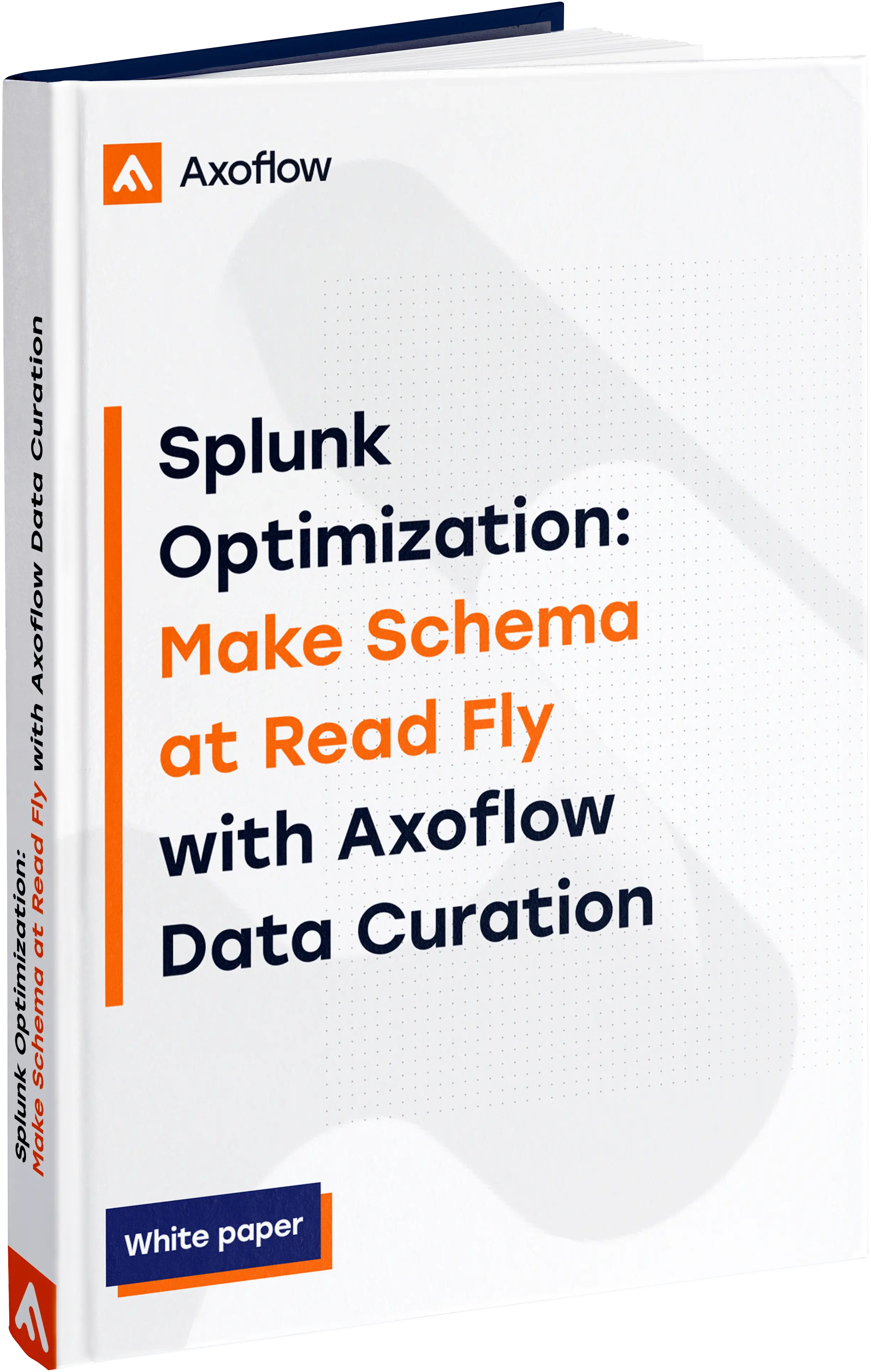Optimize Splunk Performance: Fix Data Before GDI for Best Results
Learn how leading enterprises are cutting Splunk costs, speeding up searches, and improving data accuracy by fixing data before GDI. Discover how Axoflow’s automated pipeline automates Splunk optimization - so you get faster insights, lower bills, and cleaner dashboards.

Who Is This White Paper for?
- Splunk administrators looking to reduce indexing load and cost
- Security teams struggling with slow Splunk searches or high storage costs
- Data engineers aiming to optimize Splunk ingestion and GDI performance
- IT leaders exploring smarter Splunk data pipeline solutions
- Anyone seeking faster, cleaner, and cheaper Splunk operations
Learn How to Optimize Splunk by Fixing Data Before GDI
From this white paper, you will learn about:
- The ongoing “Get Data In” (GDI) challenge and how it impacts Splunk performance
- Splunk’s ingestion methods - Universal Forwarders vs. HTTP Event Collector (HEC)
- How Technology Add-ons (TAs) rely on well-curated data to function optimally
- How to reduce Splunk indexer load and CPU overhead
- How to improve Splunk search performance and query speed
- How to lower Splunk license and storage costs
- How to automate sourcetype classification before ingestion
- How to get cleaner, more accurate dashboards instantly
Don’t Let Splunk Figure It Out the Hard Way
Splunk’s “schema-on-the-fly” is powerful - but when ingested raw data volume scales, performance and costs spiral fast. This white paper shows how to optimize Splunk efficiency with a “shift-left” data strategy: fixing and classifying data before it enters Splunk.
You’ll learn how Axoflow’s automated data pipeline automates GDI best practices - setting sourcetypes, enriching metadata, and eliminating costly regex parsing - so your Splunk runs leaner and faster.